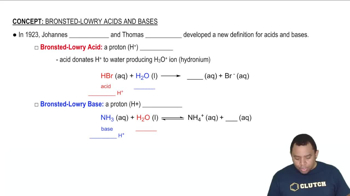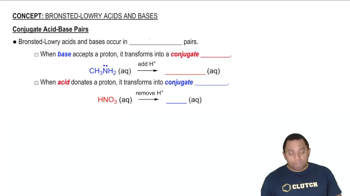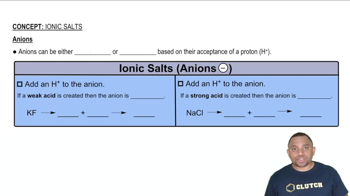Here are the essential concepts you must grasp in order to answer the question correctly.
Acid-Base Theory
Acid-base theory explains the behavior of acids and bases in chemical reactions. According to the Brønsted-Lowry theory, an acid is a proton donor, while a base is a proton acceptor. The strength of a base is determined by its ability to accept protons, which is influenced by its structure and the stability of its conjugate acid.
Recommended video:
Bronsted-Lowry Acid-Base Theory
Conjugate Acid Stability
The stability of a conjugate acid plays a crucial role in determining the strength of a base. A more stable conjugate acid indicates a stronger base, as it is less likely to donate protons back to the solution. Factors affecting stability include electronegativity, resonance, and the overall charge distribution within the molecule.
Recommended video:
Conjugate Acid-Base Pairs
Comparative Basicity of Anions
When comparing the basicity of anions like PO4^3- and AsO4^3-, one must consider the central atom's electronegativity and size. Phosphorus (P) is less electronegative than arsenic (As), which can lead to a stronger basic character for PO4^3- due to its ability to stabilize the negative charge more effectively than AsO4^3-.
Recommended video:
Anion Acidity and Basicity

 Verified step by step guidance
Verified step by step guidance

